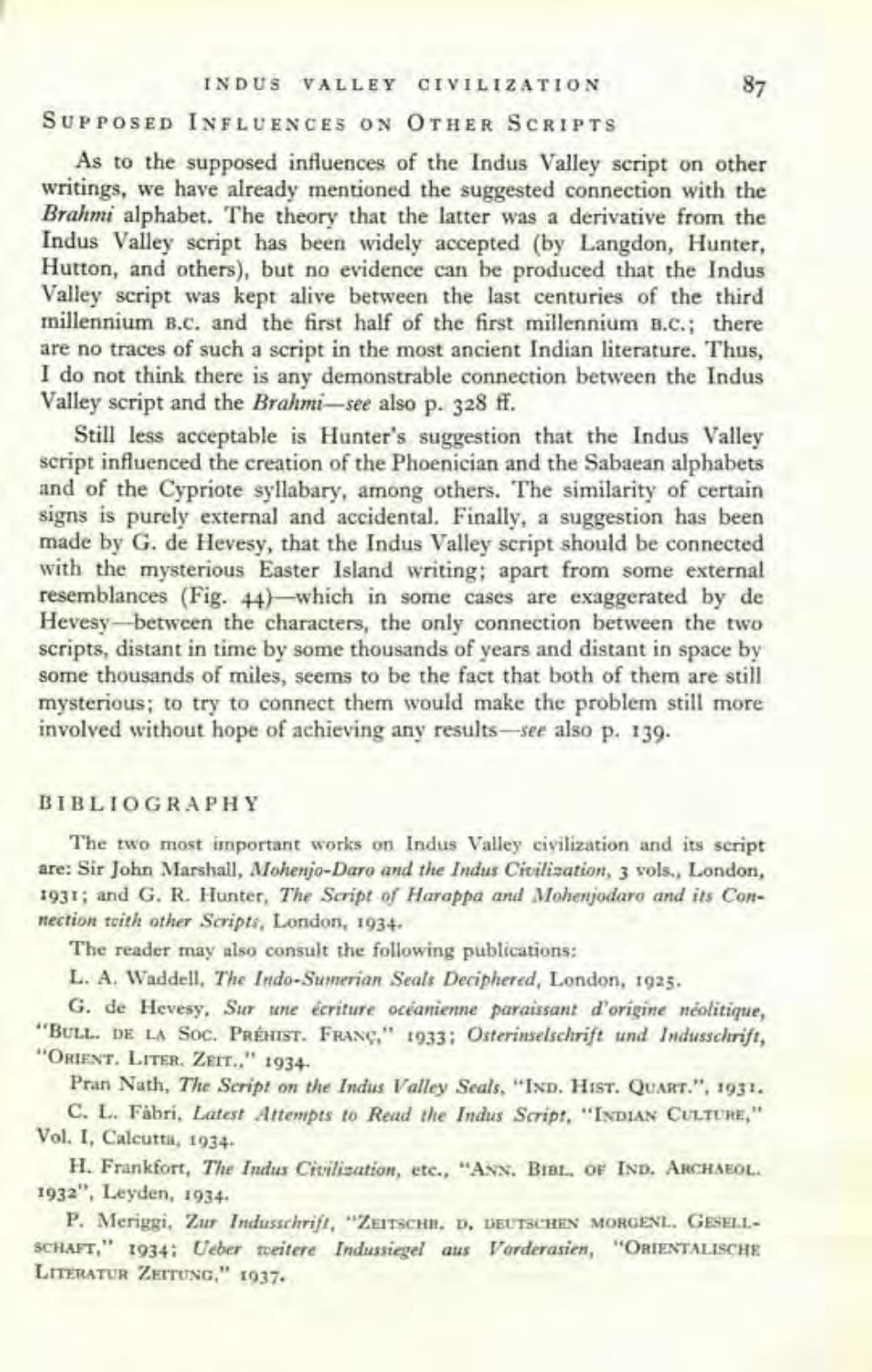________________
INDUS VALLEY CIVILIZATION SUPPOSED INFLUENCES ON OTHER SCRIPTS
As to the supposed influences of the Indus Valley script on other writings, we have already mentioned the suggested connection with the Brahmi alphabet. The theory that the latter was a derivative from the Indus Valley script has been widely accepted (by Langdon, Hunter, Hutton, and others), but no evidence can be produced that the Indus Valley script was kept alive between the last centuries of the third millennium B.c. and the first half of the first millennium B.C.; there are no traces of such a script in the most ancient Indian literature. Thus, I do not think there is any demonstrable connection between the Indus Valley script and the Brahmi-see also p. 328 ff.
Still less acceptable is Hunter's suggestion that the Indus Valley script influenced the creation of the Phoenician and the Sabaean alphabets and of the Cypriote syllabary, among others. The similarity of certain signs is purely external and accidental. Finally, a suggestion has been made by G. de Hevesy, that the Indus Valley script should be connected with the mysterious Easter Island writing; apart from some external resemblances (Fig. 44)which in some cases are exaggerated by de Hevesy-between the characters, the only connection between the two scripts, distant in time by some thousands of years and distant in space by some thousands of miles, seems to be the fact that both of them are still mysterious; to try to connect them would make the problem still more involved without hope of achieving any results-see also p. 139.
BIBLIOGRAPHY
The two most important works on Indus Valley civilization and its seript are: Sir John Marshall, Mohenjo-Daro and the Indus Civilisation, 3 vols., London, 1937; and G. R. Hunter, The Script of Harappa and Mohenjodara and its Con Nection toith other Scripts, London, 193+.
The reader may also consult the following publications: L. A. Waddell, The Indo-Sumerian Seals Deciphered, London, 1925.
G. de Hevesy. Sur me ecriture océanienne paraissant d'origine neolitique, "BULL. DE LA Soc. PRÉHIST. FRANG," 1933: Osterinselschrift und Toidusschrift, "ORIENT. LITER ZEIT.," 1934.
Pran Nath, The Script on the Indus Valley Seals. "IND. HIST. QUART.", 1931.
C. L. Fabri, Latest Attempts to Read the Indus Script, "INDIAN CULTURE, Vol. I, Calcuttil, 1934
H. Frankfort, The Indus Civilisation, etc., "Anx. BiaL, OF IND. ARCHAEOL. 1932", Leyden, 1934.
P. Meriggi. Zur Indusschrift, "ZEITSCHR. D. DEUTSCREN MORGENL, GESELLSCHAFT," 1934: Ueber toeitere Indussiegel aus Vorderasien, "ORIENTALISCHE LITERATUR ZEITUNG," 1937.




